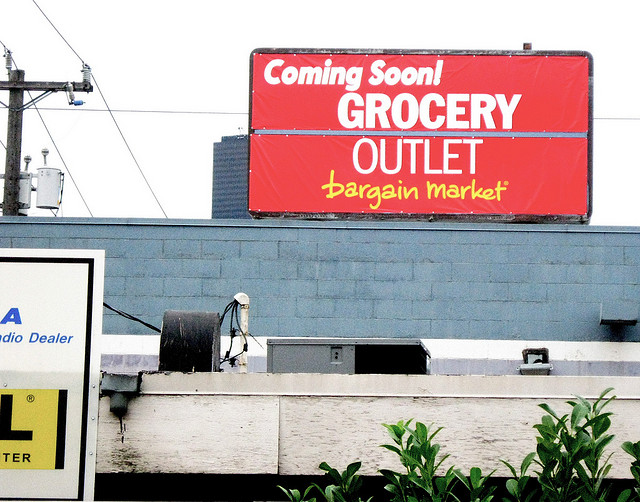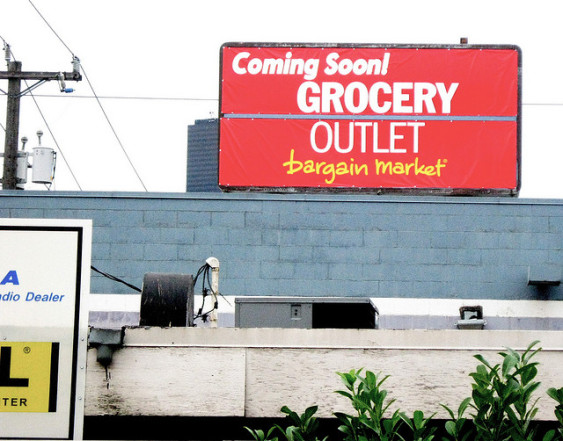Clark’s post last week on a new WalkScore tool that maps which homes are within a five-minute walk to a grocery store reminded me of the always interesting findings from the University of Washington’s Center for Public Health Nutrition, where researchers have lately been looking at whether proximity to a grocery store actually influences people’s diet and health.
What they’re finding, at least in King County, is that it doesn’t matter much. How close you live to a grocery store here has no correlation with how obese you are or even how many fruits and vegetables you eat. What does matter, the researchers found, is where you choose to shop for food.
That’s because in a place where most people have access to a car, only a third of people actually shop at the grocery store that is closest to their house. And two kinds of people are more likely to travel right past their “neighborhood” store: People looking to shop at lower-priced chains like Safeway and people willing to pay a premium for fancy cheeses and organic spreads at high-priced stores like PCC and Metropolitan Market.
These disparities in where people actually shop turns out to be a better predictor of obesity and how many fruits and vegetables people eat, even after adjusting for socioeconomic differences. King County residents who buy most of their food at low-price grocery stores, for instance, were three times more likely to be obese than those who shopped at high-price groceries. They also reported eating fewer fruits and vegetables than people who shopped at medium-price and high-price stores.
The two studies published in the American Journal of Public Health, one led by the UW Center for Public Nutrition’s Adam Drewnowski in 2012 and another written by Anju Aggarwal and published earlier this month, are based on an extensive survey of more than 1,300 King County residents. They’re among the few “food desert” studies that have asked residents about their actual shopping habits, rather than just relying on maps and data.
For years, it’s been assumed that food deserts—neighborhoods where people live some distance away from a full-service grocery store or lack easy access to healthy foods—were a contributing factor to poor diet, obesity, and compromised health. Some studies have certainly confirmed these linkages, and it may well be the case in some places where residents are more likely to walk or be transit-dependent. That’s given rise to an impulse to try to “fix” food deserts by locating grocery stores there.
But a growing body of evidence suggests that those relationships are more complicated, and price may be an even more important factor than proximity in influencing where people shop and how healthy their diets are.
For instance, fewer non-white King County residents (26.6%) regularly shopped at their neighborhood grocery stores than white residents (35.3%). This suggests that either the grocery stores closest to where non-white residents live aren’t meeting their needs, either on price or selection or quality. So just because you open a grocery store in an underserved neighborhood doesn’t necessarily mean people will shop there if the other factors that influence where they buy food don’t line up.
Of course, grocery shopping habits may be quite different for people who choose not to have a car or don’t have access to one. One limitation of the UW studies is that the overwhelming majority (93%) of the households surveyed own at least one car, which is a little higher than King County as a whole (91%) and significantly higher than the city of Seattle (84%). So the studies aren’t focused on carless or transit-dependent residents, for whom close proximity to a grocery store may be a bigger deal.
But it’s a reminder that just drawing a line between someone’s home and the nearest grocery store doesn’t necessarily tell you whether they actually like to shop there, though it’s certainly nicer to have the option than not.









Eldan Goldenberg
This is interesting. Perhaps I’m just reading in what I’m predisposed to see, but I’m reading it as an indictment of our land use patterns and real estate market, which create a situation in which carlessness is a privilege for those who can afford to live in walkable places, and not even an option for the poor.
That’s a proposition which could be tested. Do you know if similar research has been done in cities like New York, where many low-income households don’t own cars?